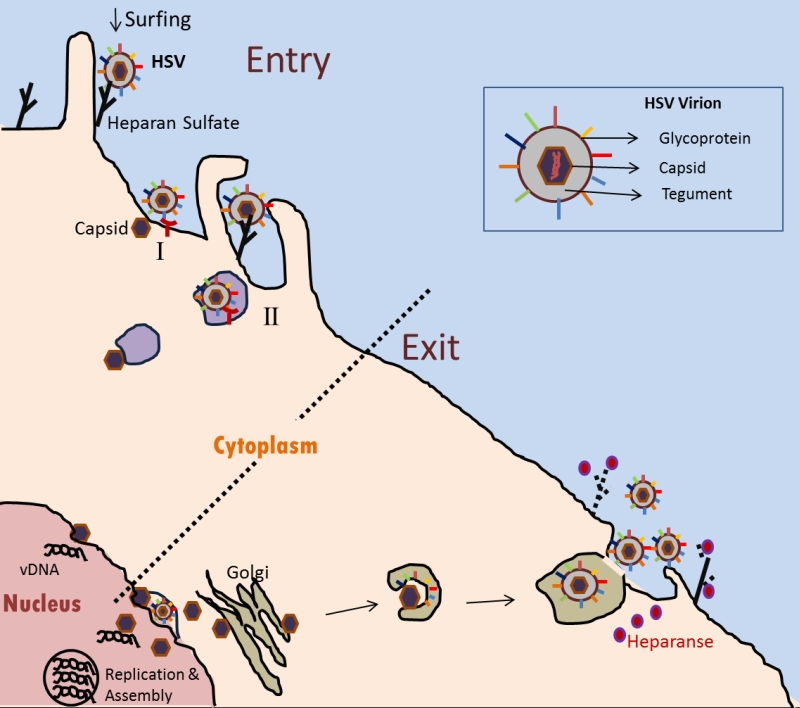FIGURE 1: Schematic of HSV-1/HSV-2 lytic infection. The HSV-1/HSV-2 virion recognizes and attaches to the heparan sulfate proteoglycan via glycoproteins on the viral envelope. By a process called ‘surfing’, the virus particles can travel along filopodia-like membrane extensions to reach the surface of the cell. On the surface of the cell, viral capsid penetration can occur by fusion of envelop with the plasma membrane (I), or alternatively by endocytosis of enveloped virions with eventual fusion of the envelope with a vesicular membrane (II). In either case, gD on the virus envelope is required via its interaction with one of the receptors (shown in red): herpesvirus entry mediator (HVEM) or nectin-1 and-2. In the cytoplasm, the capsid (brown) travels to the nucleus where the viral DNA is released. Multiple rounds of replication result in multiple copies of viral DNA and other components that get packaged and assembled in the nucleus. During egress, the newly assembled capsid gets its primary envelope at the peri-nuclear membrane, which is lost during egress from the outer nuclear membrane. Naked capsid travels through the cytoplasm where it receives the tegument and the viral envelope (presumably from the Golgi or the ER). Heparanase (denoted as pink spots) is an enzyme that was recently described in aiding viral egress. The enzyme cleaves of cell surface heparan sulfate (dotted black) which clears the path for the virus to exit the cell.
By continuing to use the site, you agree to the use of cookies. more information
The cookie settings on this website are set to "allow cookies" to give you the best browsing experience possible. If you continue to use this website without changing your cookie settings or you click "Accept" below then you are consenting to this. Please refer to our "privacy statement" and our "terms of use" for further information.

